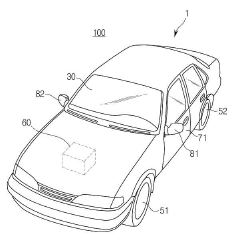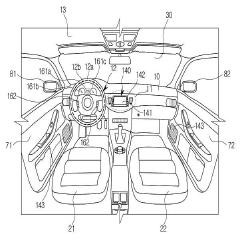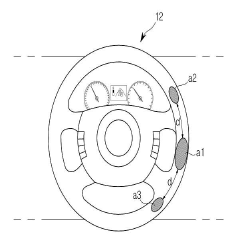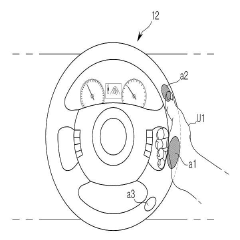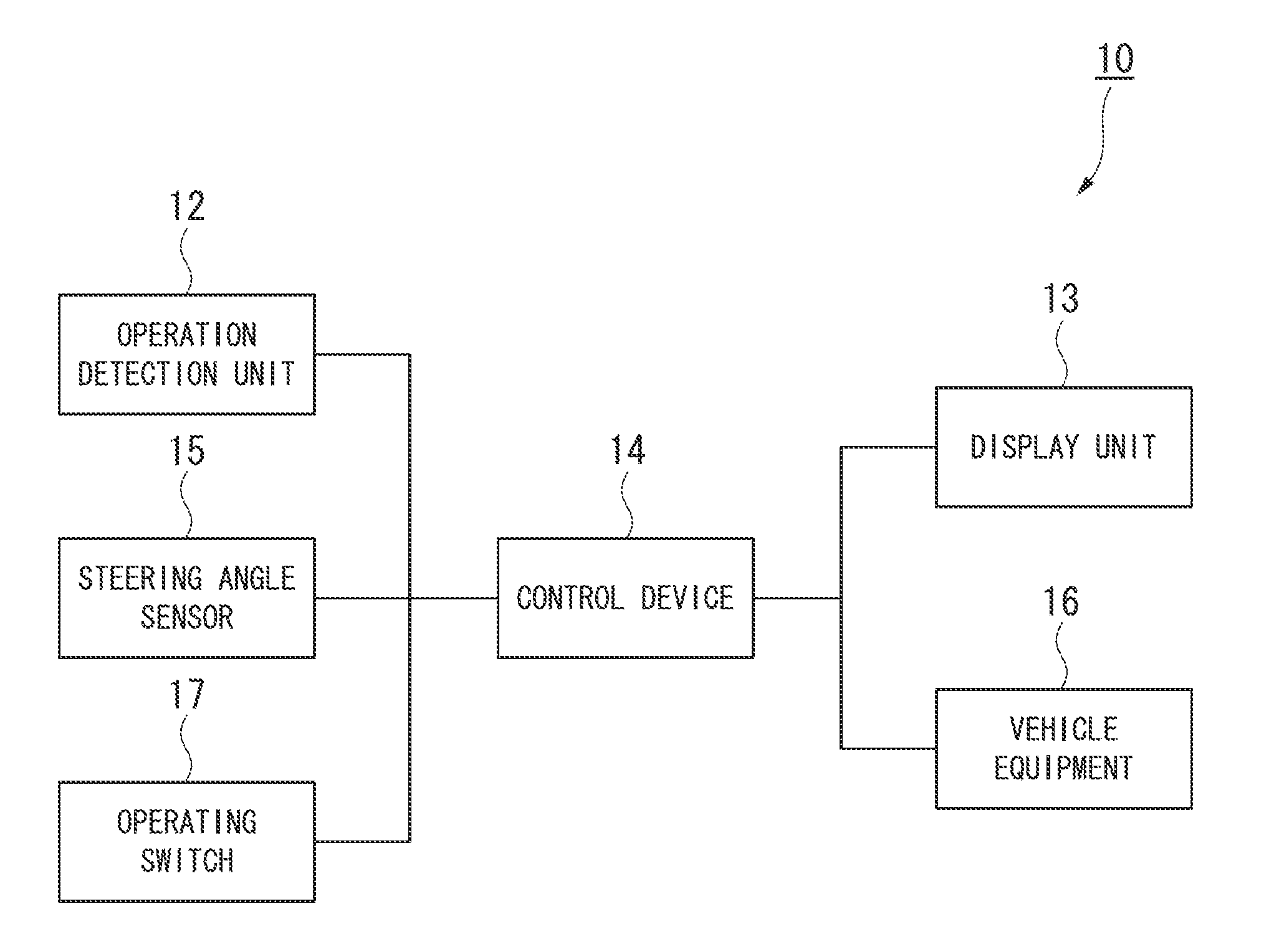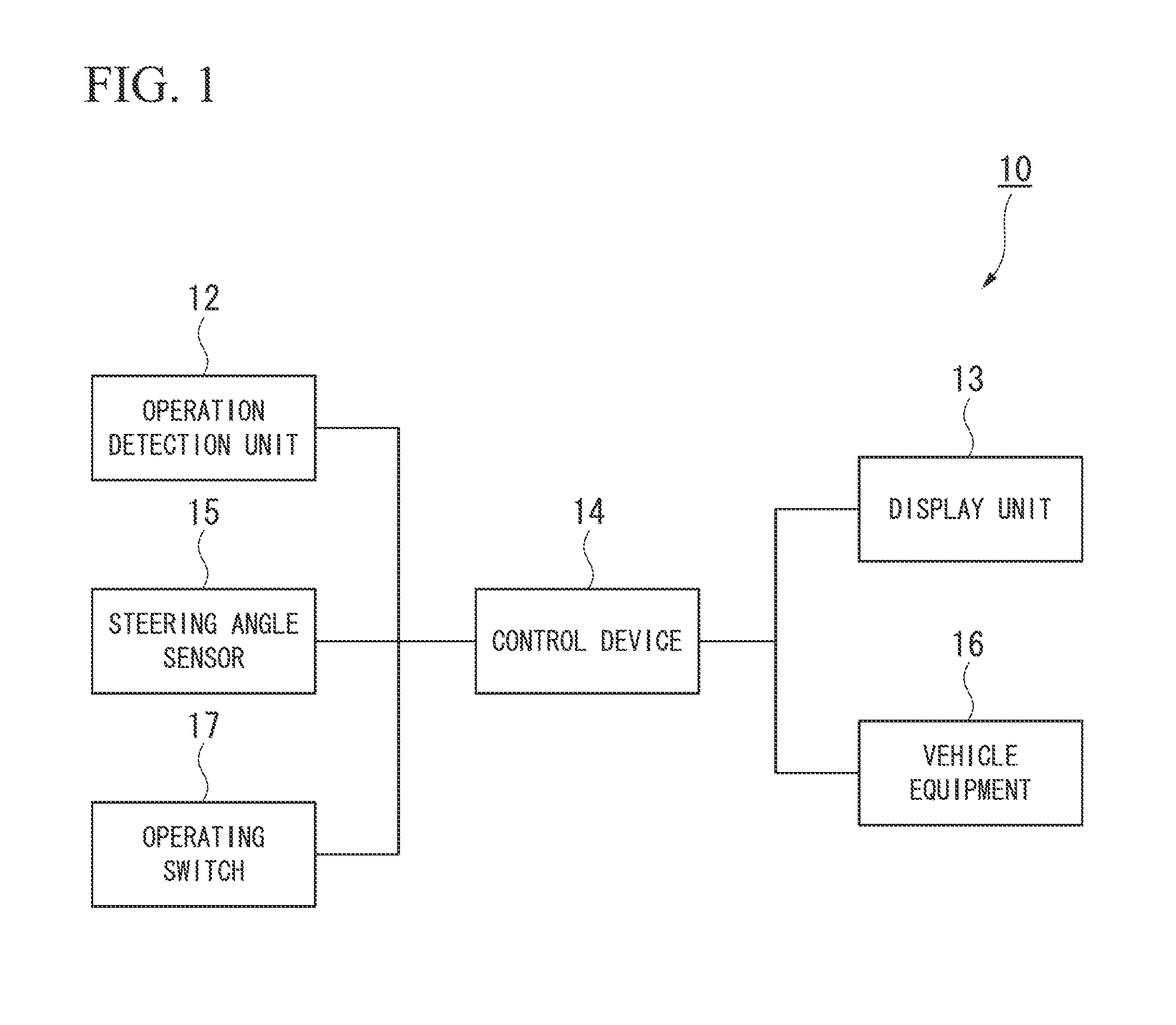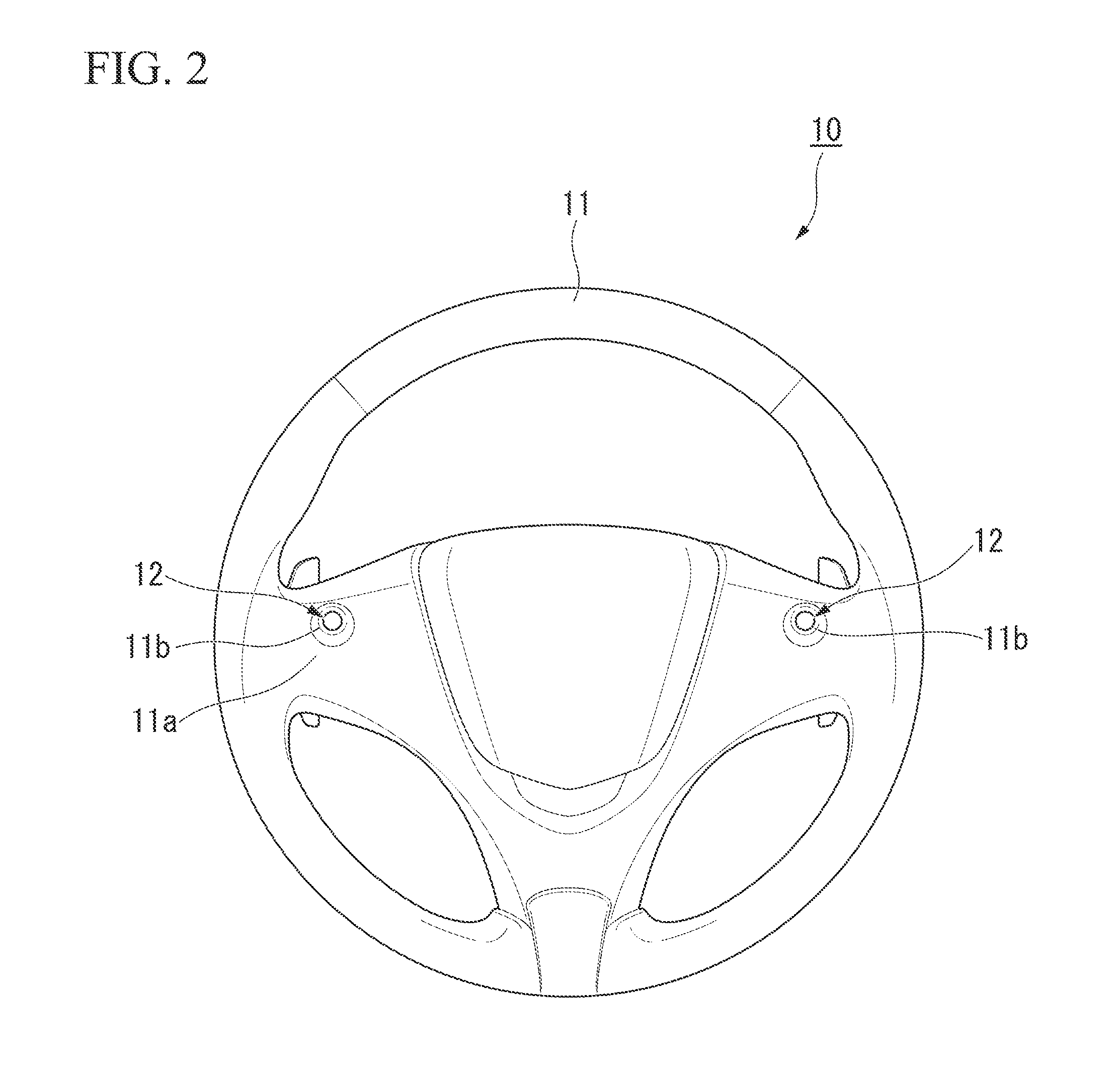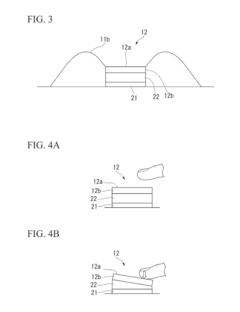How to Implement Touch Controls on Steering Wheels?
JUL 18, 20259 MIN READ
Generate Your Research Report Instantly with AI Agent
Patsnap Eureka helps you evaluate technical feasibility & market potential.
Steering Wheel Touch Control Evolution and Objectives
The evolution of steering wheel touch controls represents a significant advancement in automotive interface design, reflecting the broader trend towards more intuitive and integrated vehicle control systems. This technology has progressed from simple button-based controls to sophisticated touch-sensitive surfaces capable of recognizing complex gestures and providing haptic feedback.
The journey began in the early 2000s with the introduction of basic steering wheel-mounted buttons for audio and cruise control. As consumer electronics advanced, drivers increasingly expected similar levels of interactivity in their vehicles. This led to the development of more advanced control systems, incorporating scroll wheels and multi-function buttons.
The true revolution came with the integration of capacitive touch technology into steering wheels. This allowed for a sleeker design and more versatile interface, capable of recognizing swipes, taps, and multi-touch gestures. Companies like BMW and Audi were among the first to implement these systems, setting new standards for in-vehicle controls.
Recent years have seen further refinements, with the introduction of haptic feedback and pressure-sensitive surfaces. These innovations aim to provide drivers with tactile confirmation of their inputs without requiring visual attention, thereby enhancing safety. Some manufacturers have also experimented with transparent OLED displays integrated into the steering wheel, offering customizable interfaces and real-time information display.
The primary objective of steering wheel touch controls is to enhance driver safety by minimizing distractions. By placing essential controls at the driver's fingertips, these systems reduce the need to reach for dashboard controls or interact with central touchscreens. This aligns with the broader goal of creating a more ergonomic and user-friendly driving experience.
Another key objective is to improve vehicle customization and adaptability. Touch controls allow for software-defined interfaces that can be updated over time and personalized to individual driver preferences. This flexibility is crucial as vehicles become increasingly connected and feature-rich.
Looking forward, the integration of artificial intelligence and predictive algorithms into steering wheel touch controls represents the next frontier. These systems aim to anticipate driver needs based on context, further streamlining the driving experience. Additionally, as autonomous driving technologies advance, steering wheel controls are expected to evolve to accommodate both manual and automated driving modes seamlessly.
The journey began in the early 2000s with the introduction of basic steering wheel-mounted buttons for audio and cruise control. As consumer electronics advanced, drivers increasingly expected similar levels of interactivity in their vehicles. This led to the development of more advanced control systems, incorporating scroll wheels and multi-function buttons.
The true revolution came with the integration of capacitive touch technology into steering wheels. This allowed for a sleeker design and more versatile interface, capable of recognizing swipes, taps, and multi-touch gestures. Companies like BMW and Audi were among the first to implement these systems, setting new standards for in-vehicle controls.
Recent years have seen further refinements, with the introduction of haptic feedback and pressure-sensitive surfaces. These innovations aim to provide drivers with tactile confirmation of their inputs without requiring visual attention, thereby enhancing safety. Some manufacturers have also experimented with transparent OLED displays integrated into the steering wheel, offering customizable interfaces and real-time information display.
The primary objective of steering wheel touch controls is to enhance driver safety by minimizing distractions. By placing essential controls at the driver's fingertips, these systems reduce the need to reach for dashboard controls or interact with central touchscreens. This aligns with the broader goal of creating a more ergonomic and user-friendly driving experience.
Another key objective is to improve vehicle customization and adaptability. Touch controls allow for software-defined interfaces that can be updated over time and personalized to individual driver preferences. This flexibility is crucial as vehicles become increasingly connected and feature-rich.
Looking forward, the integration of artificial intelligence and predictive algorithms into steering wheel touch controls represents the next frontier. These systems aim to anticipate driver needs based on context, further streamlining the driving experience. Additionally, as autonomous driving technologies advance, steering wheel controls are expected to evolve to accommodate both manual and automated driving modes seamlessly.
Market Analysis for Smart Steering Wheel Systems
The smart steering wheel systems market is experiencing significant growth, driven by increasing demand for advanced driver assistance systems (ADAS) and enhanced in-vehicle user interfaces. This market segment is expected to expand rapidly over the next decade as automotive manufacturers seek to differentiate their products and improve safety features.
Consumer demand for more intuitive and seamless vehicle controls is a key factor propelling the adoption of touch-enabled steering wheels. Drivers are increasingly expecting their vehicles to offer smartphone-like interfaces, with easy access to infotainment systems, navigation, and vehicle settings without taking their hands off the wheel. This trend aligns with the broader shift towards connected and autonomous vehicles, where the steering wheel becomes a central hub for driver interaction.
Safety regulations and the push for reducing driver distraction are also contributing to market growth. Touch controls on steering wheels allow drivers to access various functions without looking away from the road, potentially reducing accidents caused by distracted driving. As governments worldwide implement stricter safety standards, automotive manufacturers are likely to invest more in smart steering wheel technologies to comply with these regulations and improve their safety ratings.
The market for smart steering wheel systems is segmented by vehicle type, with passenger cars currently dominating the market share. However, the commercial vehicle segment is expected to show rapid growth as fleet operators recognize the benefits of enhanced driver interfaces for improving efficiency and safety in long-haul transportation.
Geographically, North America and Europe are leading the market due to higher consumer awareness, stricter safety regulations, and the presence of major automotive manufacturers and technology companies. However, the Asia-Pacific region is anticipated to witness the fastest growth, driven by increasing vehicle production, rising disposable incomes, and growing demand for luxury vehicles in countries like China and India.
Key players in the smart steering wheel systems market include established automotive suppliers such as Bosch, Continental, and ZF Friedrichshafen, as well as emerging technology companies specializing in human-machine interfaces. These companies are investing heavily in research and development to create more advanced and cost-effective solutions for touch-enabled steering wheels.
The market faces some challenges, including the high cost of implementation, which may limit adoption in entry-level vehicles. Additionally, concerns about the reliability and durability of touch-sensitive surfaces in automotive applications need to be addressed to ensure widespread acceptance.
Despite these challenges, the overall outlook for the smart steering wheel systems market is highly positive. As vehicle electrification and automation continue to advance, the role of the steering wheel as an interface is likely to evolve further, potentially incorporating haptic feedback, gesture recognition, and other advanced technologies to create more immersive and responsive driver experiences.
Consumer demand for more intuitive and seamless vehicle controls is a key factor propelling the adoption of touch-enabled steering wheels. Drivers are increasingly expecting their vehicles to offer smartphone-like interfaces, with easy access to infotainment systems, navigation, and vehicle settings without taking their hands off the wheel. This trend aligns with the broader shift towards connected and autonomous vehicles, where the steering wheel becomes a central hub for driver interaction.
Safety regulations and the push for reducing driver distraction are also contributing to market growth. Touch controls on steering wheels allow drivers to access various functions without looking away from the road, potentially reducing accidents caused by distracted driving. As governments worldwide implement stricter safety standards, automotive manufacturers are likely to invest more in smart steering wheel technologies to comply with these regulations and improve their safety ratings.
The market for smart steering wheel systems is segmented by vehicle type, with passenger cars currently dominating the market share. However, the commercial vehicle segment is expected to show rapid growth as fleet operators recognize the benefits of enhanced driver interfaces for improving efficiency and safety in long-haul transportation.
Geographically, North America and Europe are leading the market due to higher consumer awareness, stricter safety regulations, and the presence of major automotive manufacturers and technology companies. However, the Asia-Pacific region is anticipated to witness the fastest growth, driven by increasing vehicle production, rising disposable incomes, and growing demand for luxury vehicles in countries like China and India.
Key players in the smart steering wheel systems market include established automotive suppliers such as Bosch, Continental, and ZF Friedrichshafen, as well as emerging technology companies specializing in human-machine interfaces. These companies are investing heavily in research and development to create more advanced and cost-effective solutions for touch-enabled steering wheels.
The market faces some challenges, including the high cost of implementation, which may limit adoption in entry-level vehicles. Additionally, concerns about the reliability and durability of touch-sensitive surfaces in automotive applications need to be addressed to ensure widespread acceptance.
Despite these challenges, the overall outlook for the smart steering wheel systems market is highly positive. As vehicle electrification and automation continue to advance, the role of the steering wheel as an interface is likely to evolve further, potentially incorporating haptic feedback, gesture recognition, and other advanced technologies to create more immersive and responsive driver experiences.
Current Challenges in Steering Wheel Touch Integration
The integration of touch controls on steering wheels presents several significant challenges that manufacturers and engineers must overcome. One of the primary obstacles is ensuring driver safety while implementing touch-sensitive surfaces on a critical vehicle control component. The steering wheel is a crucial interface for vehicle control, and any modifications must not compromise its primary function or distract the driver.
Ergonomic considerations pose another major challenge. The steering wheel's curved surface and varying grip positions make it difficult to design touch controls that are consistently accessible and easy to use for all drivers. Additionally, the constant movement of the steering wheel during driving complicates the placement and functionality of touch-sensitive areas.
Environmental factors also present significant hurdles. Steering wheels are exposed to a wide range of temperatures, humidity levels, and potential contaminants such as dirt, sweat, and moisture from the driver's hands. These conditions can affect the reliability and responsiveness of touch sensors, potentially leading to false inputs or reduced sensitivity.
The need for durability and longevity is another critical challenge. Steering wheel touch controls must withstand constant use, vibrations, and potential impacts over the vehicle's lifetime. This requires robust design and materials that can maintain functionality without degradation over time.
Integrating touch controls with existing steering wheel functions, such as airbag systems and heating elements, adds another layer of complexity. Engineers must find ways to incorporate touch-sensitive surfaces without interfering with these essential features or compromising their effectiveness.
Cost considerations also play a significant role in the challenges faced by manufacturers. Implementing advanced touch control systems on steering wheels can substantially increase production costs, which may be difficult to justify in lower-end vehicle models.
Lastly, regulatory compliance and standardization present ongoing challenges. As touch controls on steering wheels are relatively new, there is a lack of established industry standards and regulations specifically addressing their implementation. Manufacturers must navigate evolving safety guidelines and ensure their designs meet or exceed regulatory requirements across different markets.
Addressing these challenges requires innovative solutions in sensor technology, materials science, and human-machine interface design. As the automotive industry continues to evolve, overcoming these obstacles will be crucial for the widespread adoption of touch controls on steering wheels, potentially revolutionizing driver interaction with vehicle systems.
Ergonomic considerations pose another major challenge. The steering wheel's curved surface and varying grip positions make it difficult to design touch controls that are consistently accessible and easy to use for all drivers. Additionally, the constant movement of the steering wheel during driving complicates the placement and functionality of touch-sensitive areas.
Environmental factors also present significant hurdles. Steering wheels are exposed to a wide range of temperatures, humidity levels, and potential contaminants such as dirt, sweat, and moisture from the driver's hands. These conditions can affect the reliability and responsiveness of touch sensors, potentially leading to false inputs or reduced sensitivity.
The need for durability and longevity is another critical challenge. Steering wheel touch controls must withstand constant use, vibrations, and potential impacts over the vehicle's lifetime. This requires robust design and materials that can maintain functionality without degradation over time.
Integrating touch controls with existing steering wheel functions, such as airbag systems and heating elements, adds another layer of complexity. Engineers must find ways to incorporate touch-sensitive surfaces without interfering with these essential features or compromising their effectiveness.
Cost considerations also play a significant role in the challenges faced by manufacturers. Implementing advanced touch control systems on steering wheels can substantially increase production costs, which may be difficult to justify in lower-end vehicle models.
Lastly, regulatory compliance and standardization present ongoing challenges. As touch controls on steering wheels are relatively new, there is a lack of established industry standards and regulations specifically addressing their implementation. Manufacturers must navigate evolving safety guidelines and ensure their designs meet or exceed regulatory requirements across different markets.
Addressing these challenges requires innovative solutions in sensor technology, materials science, and human-machine interface design. As the automotive industry continues to evolve, overcoming these obstacles will be crucial for the widespread adoption of touch controls on steering wheels, potentially revolutionizing driver interaction with vehicle systems.
Existing Steering Wheel Touch Control Solutions
01 Touch-sensitive display interfaces
Touch-sensitive display interfaces are implemented in various devices to enable user interaction through touch inputs. These interfaces can detect and interpret different types of touch gestures, allowing for intuitive control of device functions and applications.- Capacitive touch sensing technology: Capacitive touch sensing technology is widely used in touch controls. It detects changes in capacitance when a conductive object, such as a finger, approaches or touches the surface. This technology allows for precise and responsive touch input, enabling various gestures and multi-touch capabilities.
- Force-sensitive touch controls: Force-sensitive touch controls incorporate pressure-sensing technology to detect the amount of force applied to the touch surface. This allows for additional input dimensions, such as distinguishing between light and hard presses, enabling more complex interactions and improved user experience in various applications.
- Haptic feedback in touch controls: Haptic feedback is integrated into touch control systems to provide tactile sensations to users. This technology simulates the feel of physical buttons or textures, enhancing user interaction and providing confirmation of touch inputs without relying solely on visual cues.
- Gesture recognition in touch interfaces: Touch control systems incorporate gesture recognition algorithms to interpret complex finger movements and patterns. This enables users to perform various actions through intuitive gestures, such as swiping, pinching, or drawing specific shapes, enhancing the versatility and user-friendliness of touch interfaces.
- Touch controls for automotive applications: Touch control technologies are adapted for use in automotive environments, addressing challenges such as glare, vibration, and driver distraction. These systems often combine touch sensing with other input methods and may feature larger, more widely spaced touch zones to improve usability while driving.
02 Multi-touch gesture recognition
Advanced touch control systems incorporate multi-touch gesture recognition, enabling devices to interpret complex input patterns involving multiple fingers or hands simultaneously. This technology enhances user experience by allowing for more sophisticated and natural interactions with touch-enabled devices.Expand Specific Solutions03 Haptic feedback in touch controls
Haptic feedback mechanisms are integrated into touch control systems to provide tactile responses to user inputs. This feature enhances the user experience by offering physical confirmation of touch interactions, improving usability and reducing input errors.Expand Specific Solutions04 Touch sensitivity adjustment
Touch control systems incorporate sensitivity adjustment features to accommodate various environmental conditions and user preferences. This allows for optimized touch response in different scenarios, such as when using the device with gloves or in wet conditions.Expand Specific Solutions05 Integration of touch controls with other input methods
Modern touch control systems are designed to work in conjunction with other input methods, such as voice commands, motion sensors, or physical buttons. This integration allows for more versatile and comprehensive user interaction, catering to diverse user needs and preferences across different devices and applications.Expand Specific Solutions
Key Automotive and Touch Technology Players
The implementation of touch controls on steering wheels is in a nascent stage of development, with the market showing significant growth potential. This technology is at the intersection of automotive and human-machine interface innovations, attracting interest from both traditional automakers and tech companies. Key players like Continental Automotive, BMW, Bosch, and Huawei are investing in research and development, indicating a competitive landscape. The market size is expected to expand as more vehicles incorporate advanced driver assistance systems and infotainment features. While the technology is still evolving, early adopters are already integrating capacitive touch and haptic feedback solutions into steering wheel designs, signaling a shift towards more intuitive and customizable in-vehicle controls.
Continental Automotive GmbH
Technical Solution: Continental has developed an innovative touch-sensitive steering wheel technology called "Smart Control" [1]. This system integrates capacitive touch sensors directly into the steering wheel's surface, allowing drivers to control various vehicle functions without removing their hands from the wheel. The technology uses a combination of haptic feedback and visual cues on the instrument cluster to provide intuitive interaction [2]. Continental's solution also incorporates gesture recognition, enabling more complex commands through simple hand movements on the wheel's surface [3]. The system is designed to adapt to different driving scenarios, adjusting sensitivity and response based on vehicle speed and driving conditions to enhance safety [4].
Strengths: Enhances driver safety by keeping hands on the wheel; highly customizable for different vehicle models; integrates seamlessly with existing vehicle systems. Weaknesses: May require a learning curve for users; potential for accidental inputs in rough driving conditions.
Bayerische Motoren Werke AG
Technical Solution: BMW has implemented a sophisticated touch control system in their steering wheels, focusing on minimalist design and intuitive operation [11]. Their solution uses a combination of capacitive touch sensors and micro-optical sensors embedded in the steering wheel rim. This dual-sensor approach allows for precise finger tracking and gesture recognition. BMW's system is integrated with their iDrive infotainment platform, enabling seamless control of navigation, communication, and entertainment functions [12]. The touch-sensitive areas are designed with subtle tactile markers, allowing drivers to locate controls without taking their eyes off the road. BMW has also incorporated haptic feedback technology, providing subtle vibrations to confirm user inputs [13].
Strengths: Minimalist design maintains aesthetic appeal; micro-optical sensors enable advanced gesture recognition; seamless integration with iDrive system. Weaknesses: High-end technology may increase production costs; potential for complexity in user interface design.
Innovative Touch Sensing Technologies for Steering Wheels
Steering wheel, vehicle comprising the steering wheel, and control method of the vehicle
PatentActiveKR1020190010107A
Innovation
- A steering wheel with a touch input unit that dynamically adjusts touch areas based on the driver's hand position, using a touch control unit to set and adjust touch areas for manipulation, including activation and deactivation based on touch input location and palm detection.
Vehicular operating device
PatentActiveUS20120249473A1
Innovation
- A vehicular operating device that includes an operation-detection device capable of detecting slide operations and pressing force, with a gesture recognition system that only recognizes gestures when a predetermined pressing force is maintained, reducing erroneous operations and improving operability by minimizing the necessary surface area and space requirements.
Safety Regulations for In-Vehicle Control Systems
Safety regulations for in-vehicle control systems play a crucial role in the implementation of touch controls on steering wheels. These regulations are designed to ensure that new technologies enhance driver safety rather than compromise it. The National Highway Traffic Safety Administration (NHTSA) in the United States and the European New Car Assessment Programme (Euro NCAP) in Europe are two key organizations that set and enforce these safety standards.
One of the primary concerns addressed by these regulations is driver distraction. Touch controls on steering wheels must be designed to minimize the time a driver's eyes are off the road. The NHTSA guidelines recommend that any single glance away from the road should not exceed two seconds, and the total eyes-off-road time for any task should not exceed 12 seconds. This requirement significantly influences the design and layout of touch controls, necessitating intuitive interfaces and haptic feedback to reduce visual dependency.
Regulations also focus on the reliability and durability of touch control systems. Given the critical nature of steering wheel controls, they must function consistently under various environmental conditions, including temperature extremes, humidity, and vibration. The systems are required to undergo rigorous testing to ensure they meet these standards, as outlined in ISO 16750 for road vehicle electrical and electronic equipment.
Another key aspect of safety regulations is the prevention of unintended activation. Touch controls must be designed with safeguards against accidental triggering, which could lead to dangerous situations. This often involves implementing confirmation steps for critical functions or using pressure-sensitive surfaces that require deliberate interaction.
Electromagnetic compatibility (EMC) is another crucial area covered by safety regulations. Touch control systems must not interfere with other vehicle electronics and must be immune to external electromagnetic interference. Standards such as CISPR 25 and ISO 11452 provide guidelines for EMC testing in automotive applications.
Ergonomics and human factors are also addressed in these regulations. The placement, size, and responsiveness of touch controls must be optimized for ease of use while driving. This includes considerations for different hand sizes, gloved operation, and accessibility for drivers with varying physical abilities.
Lastly, safety regulations mandate comprehensive documentation and traceability. Manufacturers must maintain detailed records of design processes, testing procedures, and risk assessments. This documentation is essential for regulatory compliance and can be crucial in the event of safety investigations or product recalls.
One of the primary concerns addressed by these regulations is driver distraction. Touch controls on steering wheels must be designed to minimize the time a driver's eyes are off the road. The NHTSA guidelines recommend that any single glance away from the road should not exceed two seconds, and the total eyes-off-road time for any task should not exceed 12 seconds. This requirement significantly influences the design and layout of touch controls, necessitating intuitive interfaces and haptic feedback to reduce visual dependency.
Regulations also focus on the reliability and durability of touch control systems. Given the critical nature of steering wheel controls, they must function consistently under various environmental conditions, including temperature extremes, humidity, and vibration. The systems are required to undergo rigorous testing to ensure they meet these standards, as outlined in ISO 16750 for road vehicle electrical and electronic equipment.
Another key aspect of safety regulations is the prevention of unintended activation. Touch controls must be designed with safeguards against accidental triggering, which could lead to dangerous situations. This often involves implementing confirmation steps for critical functions or using pressure-sensitive surfaces that require deliberate interaction.
Electromagnetic compatibility (EMC) is another crucial area covered by safety regulations. Touch control systems must not interfere with other vehicle electronics and must be immune to external electromagnetic interference. Standards such as CISPR 25 and ISO 11452 provide guidelines for EMC testing in automotive applications.
Ergonomics and human factors are also addressed in these regulations. The placement, size, and responsiveness of touch controls must be optimized for ease of use while driving. This includes considerations for different hand sizes, gloved operation, and accessibility for drivers with varying physical abilities.
Lastly, safety regulations mandate comprehensive documentation and traceability. Manufacturers must maintain detailed records of design processes, testing procedures, and risk assessments. This documentation is essential for regulatory compliance and can be crucial in the event of safety investigations or product recalls.
Human-Machine Interface Ergonomics in Automotive Design
The integration of touch controls on steering wheels represents a significant advancement in automotive human-machine interface (HMI) design, focusing on enhancing driver interaction while minimizing distractions. This innovation aligns with the broader trend of creating more intuitive and responsive vehicle interfaces, addressing the growing complexity of in-car systems and the increasing demand for seamless connectivity.
Ergonomic considerations play a crucial role in the implementation of touch controls on steering wheels. The placement, size, and responsiveness of these controls must be carefully designed to ensure they can be easily accessed and operated without requiring the driver to remove their hands from the steering wheel or divert their attention from the road. This involves extensive research into hand positioning, finger reach, and natural thumb movement patterns while gripping the steering wheel.
The tactile feedback of touch controls is another critical aspect of their ergonomic design. Unlike traditional physical buttons, touch controls lack inherent tactile feedback, which can make them challenging to use without visual confirmation. To address this, manufacturers are exploring various haptic feedback technologies, such as micro-vibrations or pressure-sensitive surfaces, to provide drivers with tactile cues when interacting with the controls.
Visual design also plays a significant role in the ergonomics of steering wheel touch controls. The interface must be clearly visible and easily interpretable at a glance, utilizing high-contrast colors, intuitive icons, and potentially customizable layouts to suit individual driver preferences. Some advanced systems incorporate small displays within the steering wheel to provide additional visual feedback and functionality.
The cognitive load on the driver is a primary concern in the design of these systems. The interface must be intuitive enough to minimize the mental effort required to operate the controls, allowing the driver to maintain focus on the road. This often involves extensive user testing and iterative design processes to refine the interface based on real-world usage patterns and driver feedback.
Adaptability to different driving conditions is another crucial ergonomic consideration. The touch controls must remain functional and accessible in various lighting conditions, weather situations, and while wearing gloves. This requires careful selection of materials, sensor technologies, and interface designs that can accommodate these variables without compromising usability or safety.
As automotive technology continues to evolve, the integration of steering wheel touch controls with other vehicle systems presents both opportunities and challenges for ergonomic design. These controls may need to interface seamlessly with heads-up displays, voice command systems, and advanced driver assistance features, requiring a holistic approach to HMI design that considers the entire ecosystem of in-vehicle interactions.
Ergonomic considerations play a crucial role in the implementation of touch controls on steering wheels. The placement, size, and responsiveness of these controls must be carefully designed to ensure they can be easily accessed and operated without requiring the driver to remove their hands from the steering wheel or divert their attention from the road. This involves extensive research into hand positioning, finger reach, and natural thumb movement patterns while gripping the steering wheel.
The tactile feedback of touch controls is another critical aspect of their ergonomic design. Unlike traditional physical buttons, touch controls lack inherent tactile feedback, which can make them challenging to use without visual confirmation. To address this, manufacturers are exploring various haptic feedback technologies, such as micro-vibrations or pressure-sensitive surfaces, to provide drivers with tactile cues when interacting with the controls.
Visual design also plays a significant role in the ergonomics of steering wheel touch controls. The interface must be clearly visible and easily interpretable at a glance, utilizing high-contrast colors, intuitive icons, and potentially customizable layouts to suit individual driver preferences. Some advanced systems incorporate small displays within the steering wheel to provide additional visual feedback and functionality.
The cognitive load on the driver is a primary concern in the design of these systems. The interface must be intuitive enough to minimize the mental effort required to operate the controls, allowing the driver to maintain focus on the road. This often involves extensive user testing and iterative design processes to refine the interface based on real-world usage patterns and driver feedback.
Adaptability to different driving conditions is another crucial ergonomic consideration. The touch controls must remain functional and accessible in various lighting conditions, weather situations, and while wearing gloves. This requires careful selection of materials, sensor technologies, and interface designs that can accommodate these variables without compromising usability or safety.
As automotive technology continues to evolve, the integration of steering wheel touch controls with other vehicle systems presents both opportunities and challenges for ergonomic design. These controls may need to interface seamlessly with heads-up displays, voice command systems, and advanced driver assistance features, requiring a holistic approach to HMI design that considers the entire ecosystem of in-vehicle interactions.
Unlock deeper insights with Patsnap Eureka Quick Research — get a full tech report to explore trends and direct your research. Try now!
Generate Your Research Report Instantly with AI Agent
Supercharge your innovation with Patsnap Eureka AI Agent Platform!
